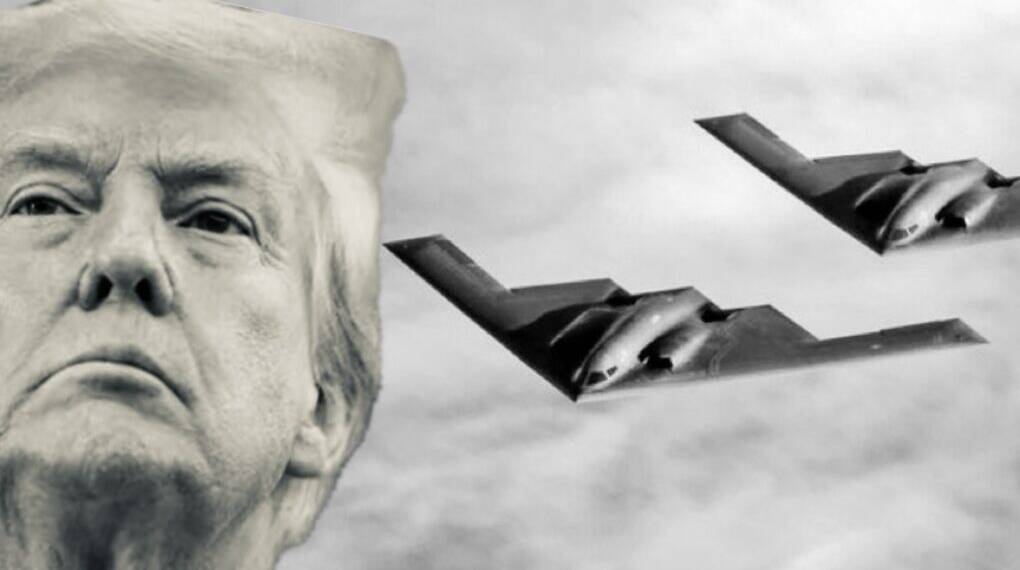In a dramatic White House appearance on August 7, 2025, President Donald Trump publicly unveiled a model of the U.S. Air Force’s new-generation B-2 stealth bomber, capping months of escalating military actions across the Middle East and spotlighting America’s evolving approach to global power projection. This reveal came just weeks after the high-profile Operation Midnight Hammer, in which B-2 bombers reportedly played a central role in decimating Iran’s nuclear facilities. At the same time, the United States Air Force has advanced its long-range strike power with the induction of the B-21 Raider, its next-generation stealth bomber. Marking a significant shift in U.S. air power, the B-21 now joins legacy bombers like the B-2 Spirit, B-1B Lancer, and B-52H Stratofortress—all of which remain active and form the backbone of America’s strategic deterrence and long-range combat capabilities.
Political Theater Meets Military Might
Trump is no stranger to using military hardware as a prop for political messaging, and this latest spectacle was quintessentially Trumpian. Holding up a sleek model of the redesigned B-2 Spirit bomber in the Oval Office, Trump declared mission success in Iran, taunting Tehran with boasts of unrivaled U.S. strength.
The timing was deliberate; the public appearance followed a deadly series of U.S. and Israeli airstrikes on Iranian nuclear sites, capped by a Fourth of July celebration where B-2s and fighter jets staged a flyover above the White House. Trump has consistently weaved military optics into his public appearances—positioning himself as the architect of decisive, high-tech American power.
The New-Gen B-2: Real Capability or Symbolic Deterrence?
The B-21 Raider is the newest addition to America’s bomber fleet, developed by Northrop Grumman under the Long-Range Strike Bomber (LRS-B) program. Its design aims to replace the older B-2 and B-52 bombers. The aircraft had its first flight in late 2023, and operational deployment is expected later this decade.
The U.S. Air Force had planned to procure at least 100 B-21 bombers, with the possibility of increasing the number to 200. The B-21 is designed to operate in contested environments, carry both nuclear and conventional weapons, and remain effective against evolving threats through its digital and open-systems design.
While Trump’s unveiling focused on a model, not an actual new airframe, Pentagon officials and media reports suggest that the “brand new” B-2 refers to a substantial upgrade package rather than an entirely new aircraft. These enhancements include avionics modernization, increased survivability, and advanced payload delivery capabilities, allowing the bomber to hit deeply buried targets—like Iran’s heavily fortified Fordow nuclear site—with the 30,000-pound Massive Ordnance Penetrator (“bunker buster”) bomb.
During Operation Midnight Hammer, sources confirm that seven B-2s staged a 37-hour round-trip mission from Missouri, launching a combination of bunker busters and Tomahawk missiles at Iranian nuclear sites in Fordow, Natanz, and Esfahan. The deployment was closely coordinated with Israeli strikes and billed as one of the most challenging air raids of the modern era, requiring complex refueling and stealth maneuvers across hostile territory.
Broader Strategic Context
Trump’s unveiling came as the administration sought to showcase “peace through strength,” deterring adversaries and reassuring allies in the wake of heightened regional conflict. The B-2’s role in recent operations was not merely operational but psychological—intended to demonstrate U.S. willingness to use advanced weapons without risking American boots on the ground.
Security analysts note that publicizing the capabilities of the B-2 could carry risks by revealing tactics and even exposing flight crews to potential retaliation. Still, to Trump and his advisors, the spectacle was an opportunity to validate a policy of overwhelming, rapid response to emerging nuclear threats.
Also Read: Trump “Obliterated Iran nuclear facilities” claims: Myth or reality ?
What’s Next?
The new-generation B-2 is expected to serve as a bridge to the arrival of the next-generation B-21 Raider—the first new U.S. strategic bomber in decades—which will eventually supplement and replace the B-2 fleet. For now, however, the B-2’s upgraded suite is at the vanguard of American airpower, having just demonstrated its relevance and reach in one of the most complex military operations of recent years.
Trump’s unveiling, though heavy on symbolism, underscored a genuine evolution in the U.S. bomber fleet and a renewed willingness to employ strategic assets as tools in both military and political spheres. As the Iran standoff simmers and global attention remains fixated on new-generation weaponry, the B-2’s shadow looms larger than ever over America’s international posture








